Photographs: Sreeram Selvaraj Shobha Warrier
Dr Tara Thiagarajan is the chairperson and managing director of the Rs 200-crore (Rs 2 billion) Madura Micro Finance Ltd. She is also the director of Microcredit Foundation of India.
MMFL works with 25,000 SHGs (self-help groups) and about 400,000 people.
A BA in Mathematics from Brandeis University and an MBA from the Kellogg School of Management (where she was an Austin scholar), she did her PhD in Neuroscience from Stanford University.
She worked on how neurons adapt to changes in their ability to communicate with one another. Her post doctoral work was at the National Institutes of Health in the United States where she worked on understanding neural network dynamics and emergent structures in the electrical field.
At present, she is a visiting scientist at the National Centre for Biological Sciences at Bengaluru.
In this interview, she talks about taking charge of Madura Micro Finance Ltd, the role of microfinance in alleviating poverty and the physics of poverty, among many other subjects.
. . .
The scientist who runs the world's most cost-efficient microfinance firm
How did you, a neuroscientist, take charge of Madura Micro Finance Ltd? Was it because of your father's death?
Basically, yes. Prior to that, I was a neuroscientist in the US. My father had a stroke and was bedridden for a couple of years before passing away.
Those three years, I was taking care of this, and also working there; shuttling between the US and India. By end 2008, I moved to India.
Why did your father start Madura Micro Finance Ltd?
My father had started a Section 25 company called Micro Credit Foundation of India.
. . .
The scientist who runs the world's most cost-efficient microfinance firm
Which was a not-for-profit company...
Yes, it was. Unfortunately, right after setting up that company, he had a stroke and was bedridden.
One of the reasons why we started Madura Micro Finance was that there were some issues with the Section 25 partnership model. It was not working well.
Why did you decide to move from a not-for-profit to a for-profit company?
The original idea was to start a profitable, sustainable venture as a part of Bank of Madura. After ICICI took over Bank of Madura, he was doing other not-for-profit work through Micro Credit Foundation of India.
However ICICI subsequently approached him to take over management of the SHGs and collections in a partnership where they would continue to be the lender.
He did this in Microcredit Foundation of India since it was an existing entity. The problem was that we didn't have control over repayment and information inflow because the borrowers were making repayments directly to the bank.
You have to have daily control over this, or else it will unravel very fast. That is why we started Madura Micro Finance.
. . .
The scientist who runs the world's most cost-efficient microfinance firm
Image: Dr Tara Thiagarajan, chairperson and managing director, Madura Micro Finance Ltd.Photographs: Sreeram Selvaraj
Your father worked with self-help groups when it was Bank of Madura...
Yes, when ICICI took over Bank of Madura, there were 1,500 SHGs. Today, we work with 25,000 SHGs and about 400,000-odd people.
The Bank of Madura model was to give a year's training on keeping accounts, finance management, how to keep a budget, etc to all the women who were part of the SHGs, before giving them loan.
Earlier, some branch managers would go, sit with them and train them. We could do this on a small scale.
When ICICI came into the picture and the model scaled, that kind of training got left out. The culture of microfinance in India changed to just collecting the ration card and giving the loan. That was how the sector landed in a crisis.
. . .
The scientist who runs the world's most cost-efficient microfinance firm
Microfinance companies charge huge interests. . . How can this help fight poverty?
I don't think it has had substantial influence at all (in the rural areas) for several reasons. Because in microfinance, 75 per cent of the loans are for consumption which means you take the loan, spend the money and somehow, repay.
If you have no job and you have not invested in anything, your income is not going to go up. So, it is like a credit card. This kind of lending will not change their economic status.
Only 25 per cent of the borrowers invest in small enterprises. The problem is, micro enterprise involve only one to three people. Most are inefficient and the returns are small and scalability is very negligible.
We do not want anyone to sell vegetables on the roadside forever.
In the last couple of years, we have looked at the problem. We know that simply by giving money, you are not going to solve any problem.
. . .
The scientist who runs the world's most cost-efficient microfinance firm
So what should be done?
We are looking at three different aspects. If someone is not going to go out of his village, his market will remain within his village. That means it will never grow. So what is important is access to the market.
About 700 million people live in the rural areas. In one taluka in Tamil Nadu that we studied extensively, we have found that only 8-10 per cent of the people in a village travel beyond 5 km in six months.
In the urban areas, we have the perception that rural people migrate a lot but most of them do not go out of their village at all.
. . .
The scientist who runs the world's most cost-efficient microfinance firm
Rural entrepreneurs also look at it as skill-based livelihood and not enterprise-creation. If you know how to weave a basket, you do that and expect people to buy it. Instead, they should be making what the people want. This is a mindset problem.
Third is to identify the right people. You can't go and give money to just anyone and expect it to be productive. Only 10 per cent may be interested in being a genuine entrepreneur. We need to find a way to identify who they are.
. . .
The scientist who runs the world's most cost-efficient microfinance firm
How do you plan to identify the right entrepreneurs and train them?
So we are in the process of developing a product targeted at them and it was launched in January. That is, our Mini-MBA programme, the cost of which is less than Rs 1,000.
It is a fully digital video presentation and only requires an operator to turn on the video. It is motivational.
We have been working on this for the last three years in collaboration with Prof. Madhu Viswanathan of the Illinois University. He has designed the curriculum based on a lot of case studies.
So far, 120 people have undergone the course in Salem and Tindivanam in pilots.
We are also working on innovative tools to assess the credit risk of micro-enterprise.
. . .
The scientist who runs the world's most cost-efficient microfinance firm
Bank of Madura started rural SHGs for women and then, microfinance to empower them, and today you have a membership of 4 lakh women. What kind of changes have taken place in the lives of these villagers?
Monetarily, on a larger scale, nothing much, I feel. It is not that we have created numerous, scalable new businesses. The numbers are very small. They may be making Rs 500 more but we want some great enterprises that can employ people and scale.
But what we have achieved is that we have given confidence to women because they are the people who handle money.
The next achievement is that they have lost the fear of going out, as at Madura we make them come to the branch and remit the money. We also arrange meetings where they share information.
We are now trying to identify who the genuine entrepreneurs are among the women.
. . .
The scientist who runs the world's most cost-efficient microfinance firm
Forbes listed Madura Micro Finance as one of the most cost-efficient microfinance companies in the world. How are you cost efficient?
Forbes looked at how much you spend to deliver one rupee of loan to somebody. We are the lowest in the world.
We were charging between 18-21 per cent when the market rates were 40 per cent. Now, we are forced to charge 24 per cent as bank rates have gone up.
We borrow from banks, mainly. Earlier, we were getting bank loans for 11 per cent, now it is 13-14 per cent.
The reason why we offer lower rates is because our operation costs are less than the other companies. We want to keep our operation costs low so that we could give loans at a lower rate and be sustainable and profitable.
. . .
The scientist who runs the world's most cost-efficient microfinance firm
The criticism against microfinance companies is that they exploit the poor and the poor give such high interest without even knowing about it...
We have also had issues with this. Now the Malegam Committee report has asked everyone to calculate and display the interest rate in the same way.
In the past, there were many different ways of presenting charges that were not understood by many people, most of whom are illiterate.
Is Madura Micro Finance a business to make profits or social entrepreneurship?
Both. If you are not profitable, you cannot do social entrepreneurship; you are dead. The difficult part is to merge the two.
The product should provide value and only then you make profits. So it is important to have value-creation. It takes a lot of thinking to merge the two.
. . .
The scientist who runs the world's most cost-efficient microfinance firm
Your blog is Physics of Poverty. Why physics?
You say you are poor because you don't have money, and you have no material possessions. If you look 1,000 years back, the world had no automobiles, no antibiotics, no hospitals, nothing.
Somewhere all these things were created. Wealth-creation, industry, innovation in the world did not come by printing money.
If you look at the history of the world, two common things can be found across all periods of innovation and development: mobility of people and spread of information.
Without access to information and resources you have nothing to act on. You need both mobility and communication to spread information and resources.
Properties change depending on how elements in the system interact. One fine example is water. Water is water when molecules are associating and dissociating rapidly, otherwise it is ice or steam.
. . .
The scientist who runs the world's most cost-efficient microfinance firm
Another example is carbon. You get both diamond and coal from carbon atoms. The difference is only in the way the atoms interact. So the outcome is not based on individual elements but interaction of the elements.
Similarly, it is only when individual neurons are put together and electrical activity travels among them does thinking result.
The outcomes of human systems also depend on their interaction. Villages are sort of like diamonds where people are closely bonded to only a few other people and don't leave or interact outside those bonds.
Like light energy, money coming into the system is a form of energy and can only be absorbed when the bonds are fluid or when people move and interact.
That is why I used the word Physics.
. . .
The scientist who runs the world's most cost-efficient microfinance firm
You also wrote that we can use chemistry, biology and non-linear dynamics to solve poverty.
Nonlinear dynamics describe how information flows within a system where there are many interacting elements.
If there are 5-6 villages in close proximity, and in one village a person has a useful idea -- how will it benefit all the villages and villagers? Only if information passes fast from one place to another.
For that, you need communication and mobility. To fight poverty also, mobility of information, people and goods is essential. With more rapid and diverse information access, innovative thinking and enterprise will emerge, which will be followed by money.
. . .
The scientist who runs the world's most cost-efficient microfinance firm
How do your roles as a neuroscientist and an entrepreneur merge?
This is the way it merges. The principles and analytical methods are similar. We are looking at a lot of data collection and research so that we can build analytics and intelligence so that the future will not be just straightforward microfinance lending but creating synergistic products that re-engineer impoverished human systems.
The scientist in me helps me understand and create an analytical framework and then move forward. We have spent the last 2-3 years thinking in that direction.
If you think about it, social networks (networks of human beings) are networks of neural networks or brains. And just as brain function guides social behaviour, behaviour feeds back to changes in the dynamics of our brain.
. . .
The scientist who runs the world's most cost-efficient microfinance firm
So one direction that my research is taking is to understand how our position in a social network -- i.e. our links to information and people -- affects the dynamics of our brain and vice versa.
How do you define the happiness you gain as a scientist and an entrepreneur?
It was divergent in the beginning but the direction we are moving in now. . . doing research, we have been able to merge the two.
Being an academic scientist, you create papers which others may or may not read and are highly unlikely to use to any material effect. When you are doing your research in an entrepreneurial context, you can take the research and results of the research to the people.
This will have a direct impact on people and, society helping, you change the system too.

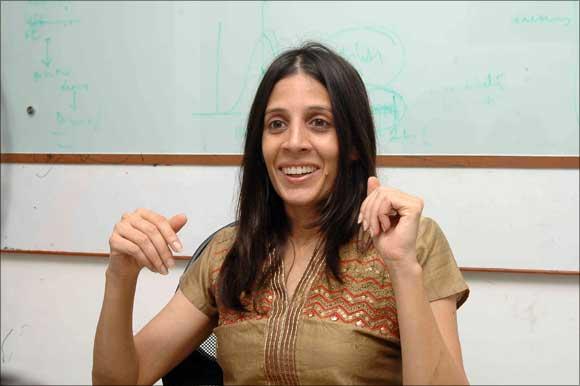


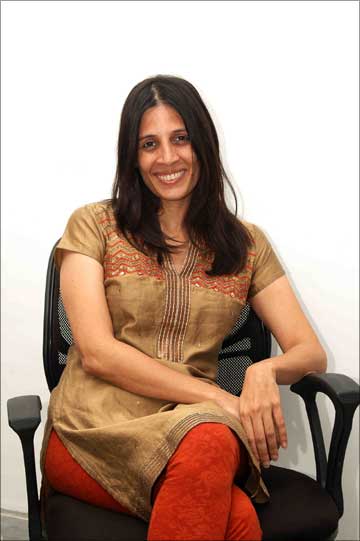
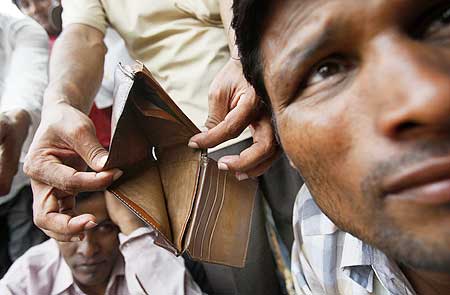


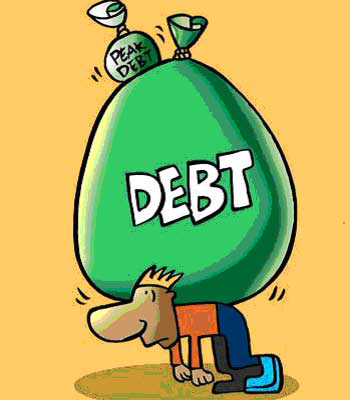
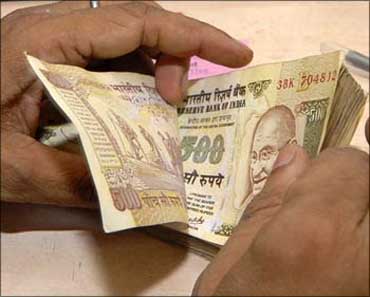
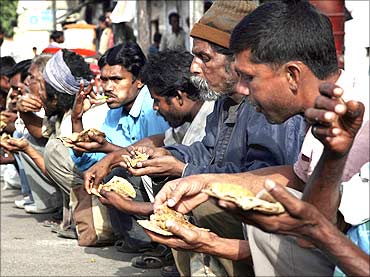
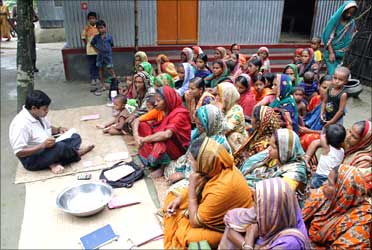
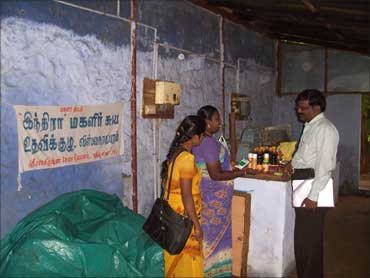

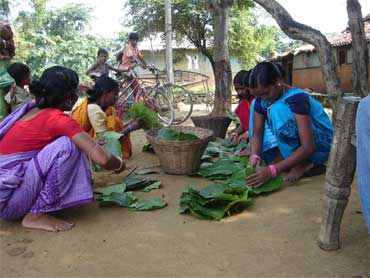

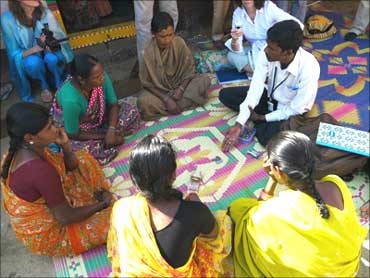
article